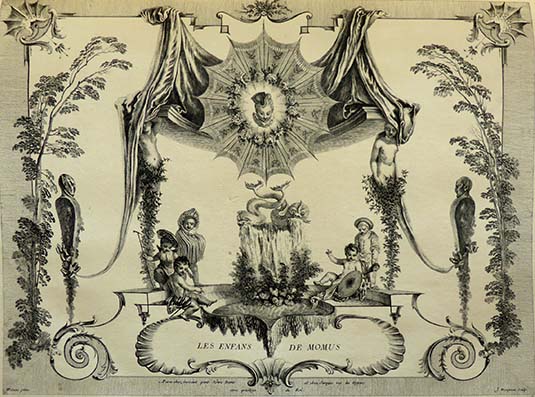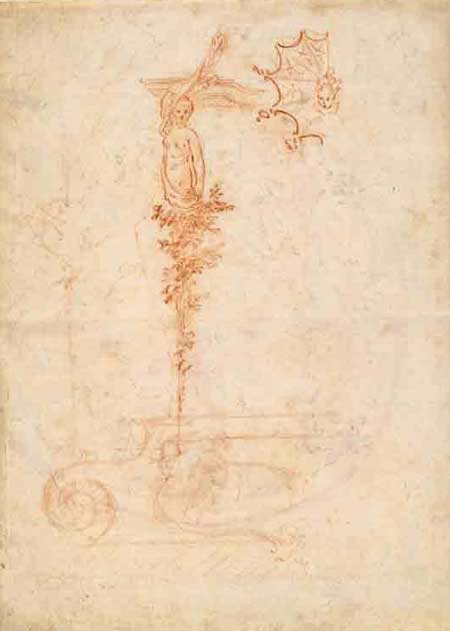
- Home Page
- Accepted
Paintings & Copies - Doubtful
Attributions - Doubtful Textual References
- Alternative
Titles - Collectors &
Museums - Bibliography
- Search Abecedario
- Watteau &
His Circle
Les Enfants de Momus
Entered February 2022
Presumed lost
Materials unknown
Measurements unknown
ALTERNATIVE TITLES
The Children of Momus
Composizione con bimbi nudi e altri vestiti da maschere della commedia dell’arte
RELATED PRINTS

Jean Moyreau after Watteau, Les Enfants de Momus, engraving, c.1729.
This decorative design and its pendant, La Cause badine, were engraved by Jean Moyreau in 1729. They were announced for sale in the April 1729 issue of Le Mercure (p. 751).
SELECT BIBLIOGRAPHY
Mariette, “Notes manuscrites,” 9: fol. 198.
Goncourt, L’Art au XVIIIème siècle (1860), 59.
Cellier, Watteau (1867), 88, 90.
Goncourt, Catalogue raisonné (1875), cat. 290.
Dacier, Vuaflart, and Hérold, Jean de Jullienne et les graveurs (1921-29), II:28, 44, 47, 64, 155, III: cat. 120.
Réau, “Watteau” (1928), cat. 274.
Adhémar, Watteau (1950), cat. 115.
Macchia and Montagni, L’opera completa di Watteau (1968), cat. 21.
Seerveld, "Telltale Statues” (1980-81), 151, 152.
Roland Michel, Watteau (1981), cat. 10.
Roland Michel, Watteau (1984), 283.
Glorieux, À l’Enseigne de Gersaint (2002), 203.
Eidelberg, “How Watteau Designed His Arabesques” (2003).
RELATED DRAWINGS

Antoine Watteau, Study for an Arabesque, red chalk, 30 x 21 cm. Boston, The Horvitz Collection.©
The arabesque enframement surrounding Les Enfants de Momus can be traced directly or indirectly is based directly or indirectly on a design for an arabesque in the Horvitz collection (Rosenberg and Prat 154). The drawing shows only the left half of the design, with the presumption that the undelineated right half would mirror it. The design features a female caryatid, a vine encircling its lower portion. At the top, an inward-curving entablature features at its center a star-burst with a woman’s head inside. At the bottom, drawn very lightly, are scrolls and other architectural elements. All these elements—the star-burst, the vine-entwined caryatid, the scrolled architectural elements at the bottom—were taken over not only for Les Enfants de Bacchus, but also La Cause badine and yet another arabesque, Le Galant.
REMARKS
In large part, this arabesque and its pendant have not been considered in detail by Watteau scholars. The engraving states “Watteau pinx.,” but was Moyreau copying an actual, full-size arabesque painted in oil on canvas, presumably meant to function as an overdoor or overwindow? Or was he copying a small preparatory watercolor or gouache?
As for the date of the arabesque, Montagni and Macchia as well as Roland Michel posited 1706-08, whereas Rosenberg and Prat suggested c. 1712 for the Horvitz drawing, which would establish a terminus post quem for the painted arabesques. Adhémar thought that it was executed in mid-1716 (a period to which she assigned more than fifty works). The marked disagreement among these authors is extreme. Presumably the earlier date was proposed on the assumption that Watteau painted such decorative works only in his early career.
For copies of Les Enfants de Momus CLICK HERE